Search Results for Tag: Bonn
Deciding Arctic future in Fairbanks and Bonn

Can summits and negotiations halt Arctic melt?. (Pic: I.Quaile, Greenland)
It is hard to tell where the most influential conversations on the future of the Arctic are being held right now. Fairbanks would be the one where “Arctic” features most directly, at the summit of the Arctic Council. But the UN climate talks are also happening here in Bonn at the moment, and what was originally planned to be a fairly technical working meeting on implementing the Paris Agreement has been overshadowed by the question of whether the world’s second-biggest greenhouse gas emitter the USA might leave that Agreement, as threatened by President Trump.
The US climate question-mark
Either way, on both stages, the USA is at the centre of things. The election of Donald Trump and the establishing of an administration set on dismantling environmental protection and climate legislation has increased the size of the question mark hanging over the Paris goal of limiting global temperature rise to the two degrees – or rather 1.5 degrees – experts consider the absolute maximum to avoid dramatic feedback effects and potentially catastrophic climate change. And as far as the Arctic is concerned, even that would be too high. The icy north is already melting rapidly.
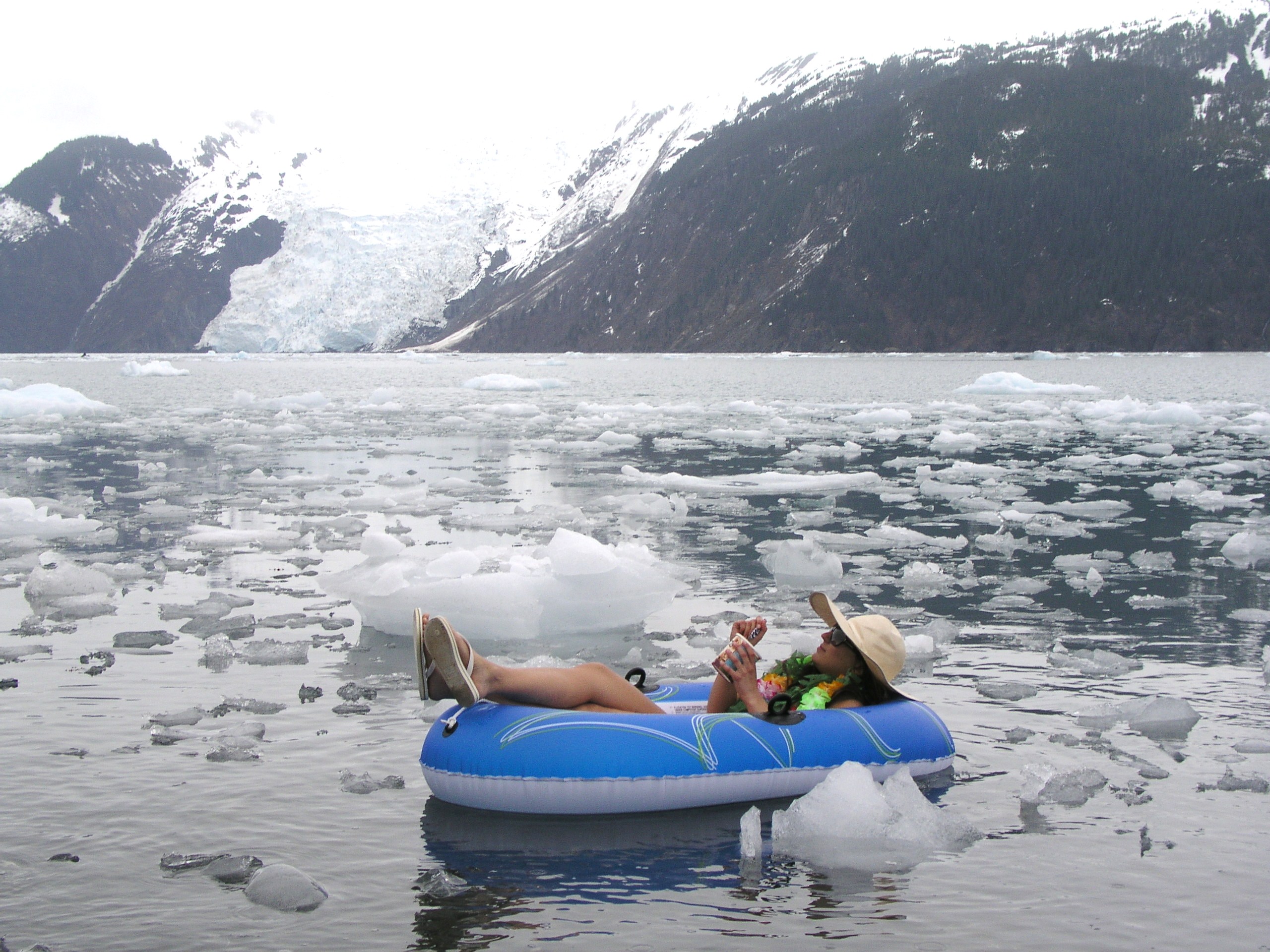
Soon no longer just fiction? (I.Quaile, Alaska)
When the talks started in Bonn on Monday, a preparatory meeting for this year’s climate mega-event, also to be held here this November at the headquarters of the UNFCCC, people were anxiously awaiting a meeting that was still scheduled to take place in the USA on Tuesday, when the President was to make the decision on the Paris Agreement. It has since been postponed. The fact that it has been rescheduled until after the G7 meeting later this month, which will be attended by President Trump, supports the view that there is more to this than just a collision of appointments. Paula Caballero, the Global Director of the Climate Program at the World Resources Institute WRI, is in Bonn for the talks, and she told me in an interview the US Cabinet is divided on this issue and President Trump still has to make up his mind. She is hopeful that good (business) sense will prevail and President Trump will be influenced by those – in his immediate surroundings and on the international stage – who point out it makes sense from all points of view to stay in that Agreement and promote the shift to renewable energies and emissions reductions. Will the G7 meeting convince Trump to stay in the Paris Agreement?
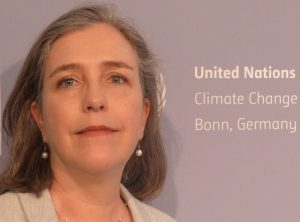
Caballero says it’s in everybody’s interests for the US to stick with Paris. (Pic. I.Quaile, Bonn)
Energy revolution from the bottom up?
You can read that interview, in which Ms Caballero outlines the ins- and outs of the US-Paris Agreement decision and stresses why it is in everybody’s interests for the US to stay in – on the DW website, or listen to it in the latest edition of Living Planet. One thing that is clear is that the momentum of the shift to renewable energies is picking up across the globe, regardless of the attempted rollback in the USA.
On Living Planet I also talk to two women in the programme who are pushing ahead with climate protection at the city level. Laura Kavanaugh and Maryke Van Staden work with ICLEI, a worldwide alliance of “local governments for sustainability”, which held a “Resilient Cities” forum, also here in Bonn, last week. Their message is quite clear. Cities around the globe are already feeling the impact of climate change now. Urgent action is required. The same is true of the Arctic, which is being hit so much harder and faster than the rest of the planet by climate warming.
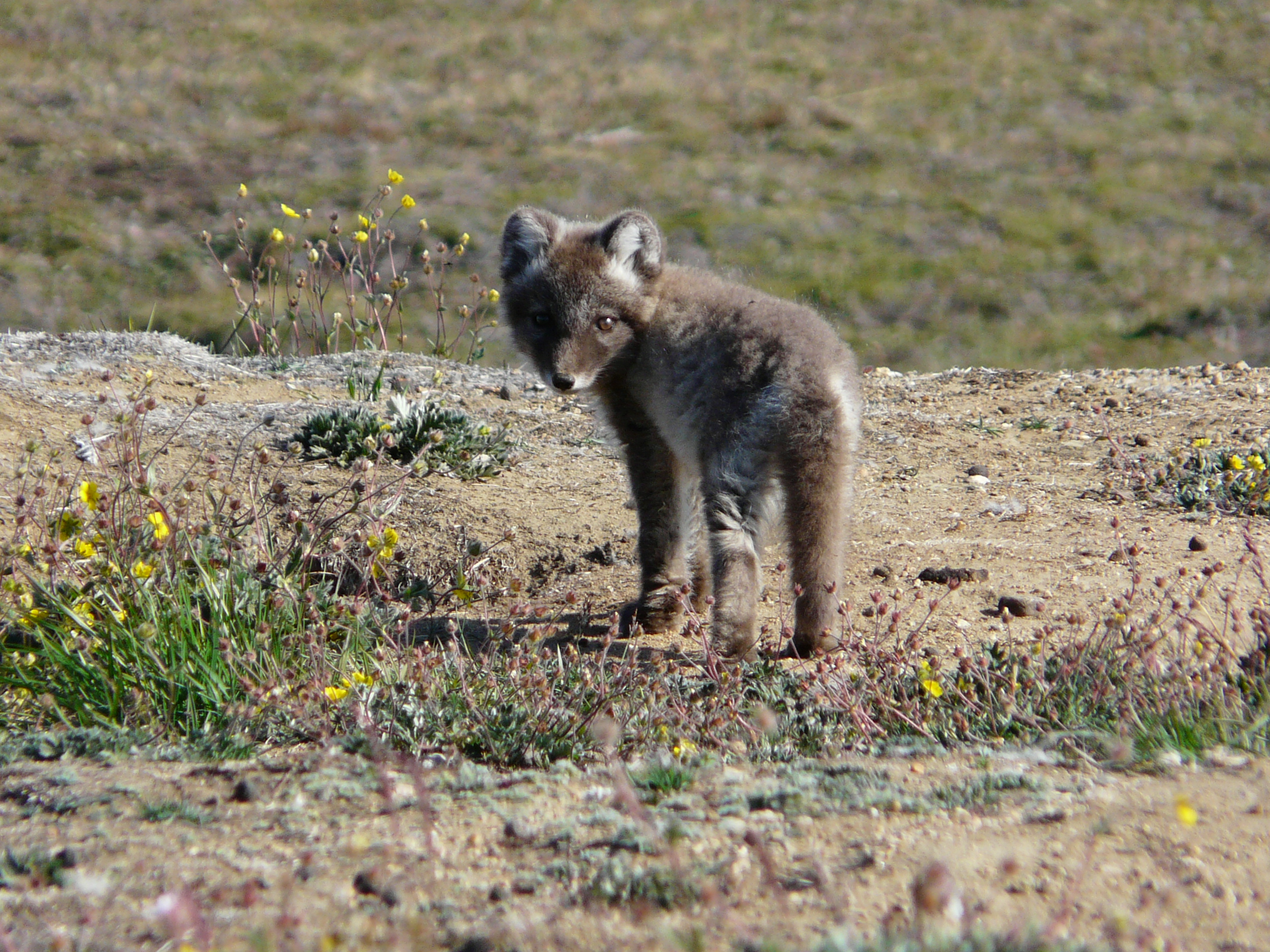
Will the Arctic fox survive in a warming climate? (Pic. I.Quaile, Greenland)
Ulterior motives
Clearly, progress to halt global warming is key to preserving the Arctic ice. That makes it all the more interesting that the Arctic Council summit in Fairbanks is being hosted by none other than the “new” US Secretary of State Rex Tillerson, as the USA has held the rotating Chairmanship of the Council for the last two years. Given that Tillerson is former CEO of the fossil fuels giant EXXON Mobil, there will be a keen interest in anything he says on or off the record, with regard to climate change and the prospect of future oil and gas drilling in the Arctic. Given that he is the first Republican Secretary of State to attend an Arctic Council summit, unsurprisingly there is much speculation about whether this indicates an increased US interest in the Arctic – and with what motives. Joel Plouffe has some interesting insights on that aspect.
The Trump administration is keen to boost Arctic drilling, hoping to benefit from easier access thanks to Arctic warming and decreasing sea ice cover. It is to be feared that this is the main reason for the upsurge in US interest in the region. The same applies to Russia.
The thing is, Lavrov didn't have to be there. The other #Arctic FMs weren't there. Just him, watching Tillerson's 2 min welcoming remarks. ? https://t.co/qeEdLGTWRg
— Heather Exner-Pirot (@ExnerPirot) May 11, 2017
Heather Exner-Poirot notes with interest that Russian foreign minister Sergei Lavrov was the only one of the Arctic foreign ministers to hear Tillerson’s speech at the reception in Fairbanks on Wednesday evening.
Cooperation – on climate science?
Finland will take over the helm of the Arctic organization at the end of today’s meeting. Finland has said it aims to protect the Arctic during its chairmanship by adhering to the Paris Agreement. Good luck Finland. You have an interesting couple of years ahead of you.
The theme of the US Chairmanship has been “One Arctic: Shared Opportunities, Challenges and Responsibilities”. The Council says this was reflected in much of the work completed by its six Working Groups and Task Forces over the last two years.
One key issue in focus is science. The “Agreement on Enhancing International Arctic Scientific Cooperation” is up for approval and signature in Fairbanks.
Since taking office, the Trump administration has taken drastic measures to cut budgets for climate science and environment protection. Not without reason did scientists takes to the streets around the world in protest. So there was a considerable feeling of relief when David Balton, the State Department’s assistant secretary for oceans and international environmental and scientific affairs and chair of the Senior Arctic Officials over the past two years announced on Monday that the US remained commited to Arctic climate change research.
“The US will remain engaged in the work the Arctic Council does on climate change throughout,” he told reporters.
“I am very confident there will be no change in that regard”.
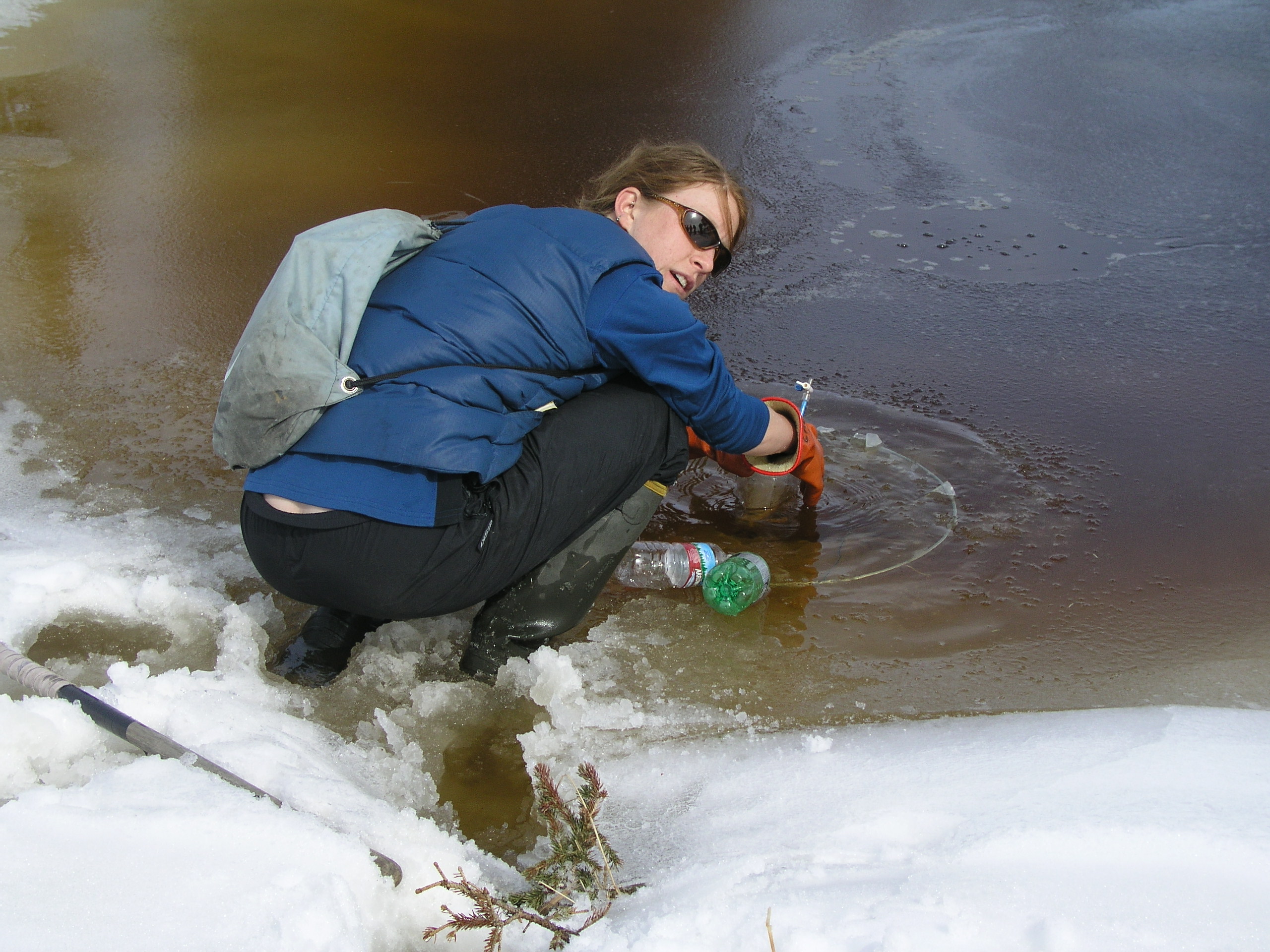
Scientific research is key. Collecting methane from melting lake in Alaska (Pic. I.Quaile)
To drill or not to drill…
It remains to be seen exactly what that will involve. It is hard to understand how Trump’s considering pulling the US out of the Paris Agreement can be reconciled with any commitment to protecting the Arctic from climate warming. It seems more likely that he is keen to benefit from the effects of climate change making the Arctic more accessible for commercial development. After all, scientific research in the Arctic can take many forms.
On April 27, the President signed an executive order aimed at rolling back restrictions on offshore drilling, including offshore Alaska. Barack Obama had issued orders closing off areas of the Arctic and Atlantic oceans to oil and gas drilling.
In the meantime, ten environmental and Alaska Native groups are suing the federal government over Trump’s new order. The groups are led by the League of Conservation Voters, Natural Resources Defense Council and Earthjustice. They say the order exceeded Trump’s authority under federal law.
In ADN, on May 3 Erica Martinson quotes Niel Lawrence, NRDC senior attorney:
“These areas have been permanently protected from the dangers of oil and gas development. President Trump may wish to undo that, and declare our coasts open for business to dirty energy companies, but he simply lacks the authority to do so under the law.”
Icy battle over future energy
While the legal wrangling continues – and the number of lawsuits involving climate change is on the increase – the Arctic continues to warm at a rapid rate.
The “Snow, Water, Ice and Permafrost in the Arctic” (SWIPA) report published in April indicates that the Arctic Ocean could be largely free of sea ice in summer in just two decades, and that projections of global sea level rise are underestimated.
The signs do not bode well for the Arctic. What happens in the region depends very largely on how fast the world is able to halt global warming. With the world’s second-biggest emitter set on exploiting the impacts of global warming in the region and reversing measures to protect environment and climate, the main question is how much influence the USA will actually have, and how resilient the transition to renewable energies will be.
Claudia Kemfert, a leading climate economist, recently published a new book in German about what she sees as the fossil fuels empire “striking back”, a campaign to discredit the green energy revolution. She warns against complacency and underestimating the influence of the fossil fuels lobby.
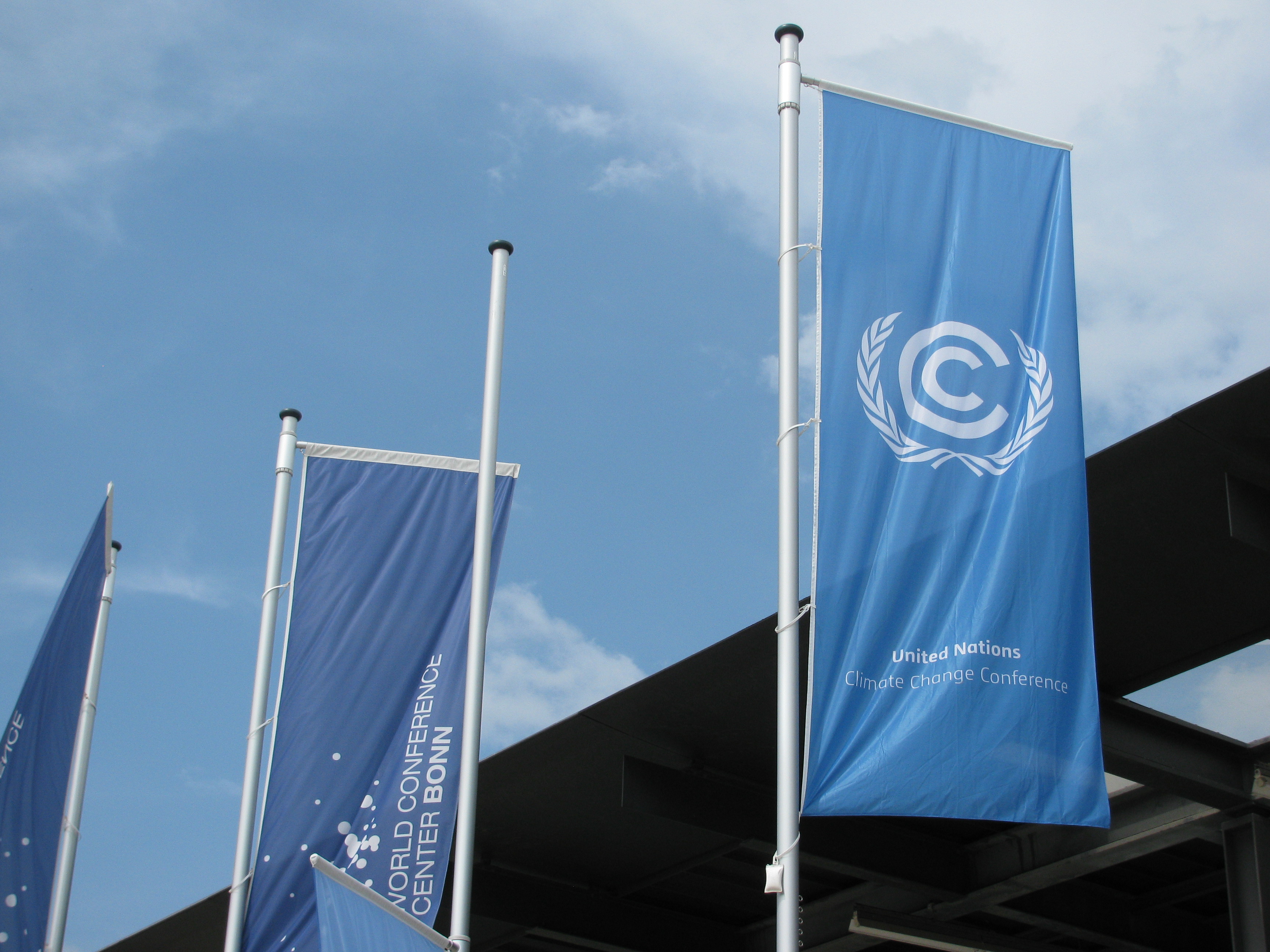
Bonn hosts the UN climate talks now and in November (Pic: I.Quaile)
At the UN talks in Bonn, the influence of those fossil fuel lobbyists on the negotiations has become a key topic of debate.
Government representatives with the common goal of achieving climate protection are not the only ones attending the talks. Alongside the environmental activists on the sidelines, lobbyists from various sectors are also there to promote their own interests. And these include industries which do not stand to profit from restrictions on emissions. All these groups are allowed to attend the international climate conferences hosted by the United Nations Framework Convention on Climate Change (UNFCCC).
Transparency needed
A recently published report from Corporate Accountability International, a United States-based nongovernmental organization, highlighted the strong power of trade and business organizations at climate-related events.
The fossil fuel industry is particularly well represented.
One group cited in the report is the National Mining Association in the US, which, the ngo notes, supports increased coal consumption and contributes to climate change.
The United States Chamber of Commerce is another regular participant. The largest lobbying group in the country – and the largest chamber of commerce in the world – is in favour of nuclear power, offshore oil production and drilling in the Arctic National Wildlife Refuge.
When it comes to the Arctic, the stakes have never been higher, politically, economically and of course environmentally.
Even the implementation of the most ambitious emissions reduction measures will not halt the increasing accessibility of the once virtually unnavigable Arctic Ocean in the near future. That guarantees that this will not be the last Arctic meeting to be attended by top-level politicians from the world’s most powerful nations. Meanwhile, the lobbyists will continue their attempts to prolong the fossil fuels era in spite of all the scientific evidence indicating the dangers it holds for the planet.
Perhaps the most important thing about Tillerson’s attendance in Fairbanks is the attention it draws to what is happening in the high north. And the UN climate process can only benefit from the transparency emerging over exactly who is advocating and influencing what in the negotiations.
Can we halt Arctic melt? Hard question for UN advisor
I had a very interesting high-profile visitor here at Deutsche Welle this week. Bonn, John Le Carré’s “Small Town in Germany” is this country’s UN city nowadays, home to organizations like the climate secretariat UNFCCC and the Convention on Migratory Species, CMS. This year marks 20 years of the former German capital in that new UN role. Fortunately for me and my colleagues, it brings a lot of interesting people to the city.
The University and the City of Bonn have been running a series of lectures by members of the Scientific Advisory Board of the United Nations Secretary-General Ban Ki-Moon this year, under the heading “Global Solutions for Sustainable Development”. This week, it was the turn of Susan Avery, who was President and Director of the Woodshole Oceanographic Institution in the USA until last year. She has been on the advisory board to Ban Ki-Moon for the last three years and she and the other advisors are just finishing their report, so it was great to have the opportunity to talk in length.
Sea and sky as dancing partners
Her lecture was about the importance of the ocean with regard to climate, but she also talked to me about a whole range of ocean-related issues in an interview to be broadcast on our Living Planet programme, starting next week.
Susan Avery is an atmospheric scientist, (the first to head a major oceanographic institution, she told me). She has a very attractive image to describe how the atmosphere and the ocean relate to each other:
“In our planetary system we have two major fluids, the ocean and the atmosphere, and think of them as two dance partners… moving along, but in order to get a choreographic dance, they have to talk to each other. They do that through the ocean-atmosphere interface, which is wave motion, spray, all the things that help them communicate. These two create different dances… an El Nino dance, or a hurricane dance, for example. In reality what they do together is transport heat, carbon and water, which are the major global cycles in our planetary system.”
Since the onset of industrialization, we humans have been introducing some different steps to the dance, it seems:
“When you take it to the climate scale, we talk a lot about the temperature of the atmosphere, increases associated with the infusion of carbon, that is human produced. The thing is that the extra carbon dioxide that gets released into the atmosphere through our fossil fuels and deforestation is associated with extra heat. Of the carbon dioxide we release into the atmosphere, half will stay in the atmosphere, 25% will go into the ocean, 25% will be taken up by the land. But if you look at the heating or warming, 93% of the extra warming is actually in the ocean. There are only very small amounts in the atmosphere.”
Centuries of warming pre-programmed
That means a huge amount of heat is actually being stored in our seas:
“And you can understand why, because the atmosphere is a gas, the ocean is a mass of liquid, which covers two thirds of our planet, and it has a huge heat capacity to store that, but that heat doesn’t just stay at the surface. So (..) when you only talk about heat and temperatures at the surface, you’re ignoring what’s happening below the surface in the ocean, and once the ocean gets heated it’s not going to stay there, because there is this fluid motion. So we’re getting to see greater and greater temperature increases at greater and greater depths. And once that heat gets into the ocean, it can stay there for centuries. Whereas in the upper ocean, it might stay 40 or 50 years, when you get into the deeper parts, because of the density and capacity, it stays there for a long time.”
So, she explained, the carbon dioxide we’ve put into the atmosphere already – and the heating associated with that – means that “we’re already pre-destined for a certain amount of global temperature increase. Many people say we have already pre-destined at least one and a half degree, some will say almost two degrees.”
Now if that is not a sobering thought.
And on top of that comes the acidification of the oceans caused by the extra carbon dioxide, which is playing havoc with coral reef systems and shell-based ocean life forms.
“This is really critical, because it attacks a lot of the base of the food chain for a lot of these eco-systems”.
“What’s in the Arctic is not staying in the Arctic”
Susan Avery’s work has included research on the Arctic and Antarctic, so of course I took the opportunity to ask how she sees all this affecting the polar regions.
She explained how the rapid increase in ice melt in the Arctic – both sea-ice and land ice – caused by atmospheric warming above and warmer ocean waters below, is of great concern for two reasons. The more obvious one is the contribution of land ice melt to sea-level-rise. The other, she explained, is that the melting of the land-based ice results in “a freshening of certain parts of the ocean, so particularly the sub-polar north Atlantic, so you have a potential for interfacing with our normal thermohaline circulation systems which could dramatically change that.” The changes in salinity currently being observed, are a “signal that the water cycle is becoming more vigorous”. This, of course, has major implications for ocean circulation and, in turn, the climate, not just in the region where the ice has been melting:
“What’s in the Arctic is not staying in the Arctic. What’s in the Antarctic is not staying in the Antarctic. I would say the polar regions are regions where we don’t have a lot of time before we see major, massive changes”.
What I find particularly worrying is that Susan Avery confirmed there is still so much we do not know about what is happening in the polar regions and in the ocean in general.
“We really need to get our observations and science and models working together”, she told me. “The new knowledge we have created on processes in the Arctic has to be incorporated into climate system models”.

Satellite data ( KSAT site in in Tromso) helps, but cannot penetrate deep ocean, Avery says. (Pic. I Quaile)
Paris and the poles
So, given that temperature rise of 1,5 to two degrees Celsius could already be a “given”, and the Arctic is being affected much faster and more strongly than the planet on average, is there any real hope that we can hold up these developments and halt the melting of ice in the Arctic? This was clearly a very difficult question for my guest. She told me she had been very relieved that the Paris Climate Agreement was signed and was sure humankind could still “make things better”. But when I asked whether we will really be able to reverse what is happening in the Arctic or halt climate change in the Antarctic, this was what she replied:
“I don’t have an answer, to be honest. I think we’re still learning a lot about the Arctic and its interface with lower latitudes, how that water basically changes circulation systems, and on what scale. But I think what’s really critically needed right now to get a better sense of the evolution of the Arctic, and of sea level rise, is a real concerted observing network. We know so little, about the Arctic, the life forms underneath the ice. We have the technology. What I really see now is a confluence of new technologies, new analytical approaches, new ways to do ocean science, and all it takes is money to really get those robots there, get the genomic studies that you need, the analysis. We are at the stage where we can do so much, to further our understanding, and I would really put a lot into the Arctic right now, if I had the money to do so.”
Me too, Susan.
Ice: the final frontier?

Investigating the undersea secrets of the Arctic night from the research vessel Helmer Hanssen (Pic: I.Quaile)
This brings us back to a key problem I have worried about ever since I started to work on how climate change is affecting the Arctic. That change is speeding up so fast, it is virtually impossible for our research to keep pace. As Susan Avery put it:
“The Arctic will be a major economic zone, we’ve already seen the North-West Passage through the Arctic waters, we’re going to see migration of certain fisheries around the world – and we don’t even know completely what kind of biological life we have below that ice. We have the ability to get underneath the ice now. I call these the frontiers, of the ocean, and that includes looking under ice.”
I am reminded of my trip on board the Helmer Hanssen last year, accompanying a research mission to find out what happens under that ice and down in the deep ocean during the cold, dark season.
(Listen to the audio feature here). There is still so much we do not know about life in the ocean – and it might disappear before we even knew it was there.
Hot, hot, hotter.. can UN talks in Bonn make a difference?
After all the hype surrounding the Paris Climate Agreement in December, there is a real danger of anti-climax, of feeling self-satisfied, of sitting back saying, “Yes, we did”, while the planet continues to break all temperature records and fossil fuel emissions continue to rise.
The first four months of this year were the hottest ever recorded. Even the “ice island” of Greenland has seen temperatures spiking in April, typically a cold month. NOAA says 2016 could be off to a similar start to 2012, when the surface of the ice sheet started melting early and then experienced the most extensive melting since the start of the satellite record in 1978. We have had several reports of islands being submerged by rising seas and devastating forest fires in Canada and now Russia, which experts say will be more common as the planet warms.
Close to my office here in Bonn, Germany’s UN city, the first official working meeting of all the parties to the Paris Agreement started on Monday, going on until next Friday. I have been there, on and off, talking to people, listening in, trying to get a sense of what is happening – or not, as the case may be.
But the atmosphere in Bonn’s new World Conference Centre is definitely low-key compared with the hype surrounding the Paris Climate Conference. Yet the world climate agreement will be worthless if the countries of the world do not succeed in transmitting it into actions in the very near future.
Time to deliver
The President of the Paris COP21, French Environmenent Minister Segolene Royal, and the incoming President of COP22, which will be held in Marrakech, Morocco’s Foreign Minister Salaheddine Mezouar, have made it clear that it is time to shift the focus from negotiation to implementation and rapid action.
The challenge ahead, they say, is to “operationalize the Paris Agreement: to turn intended nationally determined contributions into public policies and investment plans for mitigation and adaptation and to deliver on our promises.”
Indeed. There is no lack of evidence to support the urgent need for faster action on climate change. An increasing number of extreme weather events are being attributed to climate change. The CO2 concentration in the atmosphere is climbing steadily and is likely to cross the critical 400 ppm mark permanently in the not-too-distant future. The global temperature is already one degree Celsius higher than it was at the onset of industrialization. That means very rapid action is needed to keep it to the agreed target of limiting warming to two degrees and preferably keeping it below 1.5 degrees.
Three degrees and more?
The Paris Agreement was hailed widely as a breakthrough, with all parties finally accepting the need to combat climate change by reducing emissions of greenhouse gases. Countries have put pledges on the table, outlining their emissions reduction targets. But so far, the reductions pledged would still take the world closer to a three-degree rise in temperature.
At the Bonn meeting, the International Energy Agency (IEA), issued a warning that governments can only reach their climate goals if they drastically accelerate climate action and make full use of existing technologies and policies.
“The ambition to peak greenhouse gas emissions very soon is anchored in the Paris agreement, but we don’t see the actions right now to make this happen”, said Takashi Hattori, Head of the IEA’s Environment and Climate Change Unit. “At the same time, there are ‘GDP-neutral’ ways and means to get emissions to peak and then fall whilst maintaining economic growth, and that’s what we need to focus on.”
GDP-neutral means that a technology or policy does not negatively impact the economic growth of a country, and can actually contribute to the growth of that country.
In Bonn, Hattori presented what the IEA calls a “bridge scenario” involving the use of five technologies and policies which it says can bridge the gap between what has been pledged by governments so far and what is required to keep the global average temperature to as low as 1.5 degrees Celsius as part of what the agency terms a “well below 2 degrees world”
The five key measures which the IEA say could achieve a peak in emissions around 2020 are energy efficiency, reducing inefficient coal, renewables investment, methane reductions and fossil-fuel subsidy reform. That sounds to me like a very sensible – and practicable set of measures. But that doesn’t mean it will be easy.
Takashi Hattori stressed that “one size does not fit all” when it comes to climate and energy policies. Different measures will be required in different parts of the world. In the Middle East, for example, the greatest potential to reduce emissions is through reducing fossil fuel subsidies, he argued, while energy efficiency would have the greatest potential in Europe and China. He recommended the “massive deployment of renewables” in India and Latin America.
Other solutions outlined include smart grids, hydrogen as fuel that can be generated with renewable sources of energy, and “smart” agriculture.
The IEA says governments should make the energy transition not only because of rising temperatures, but because of other benefits, such as a reduction of air pollution. That makes sense. People in congested cities are more worried about pollution damaging their health than about climate change, the experts say.
I am reminded of an interview I conducted recently with Chinese expert Lina Li, when she told me she thought China’s air pollution problem would speed up the country’s ratification and implementation of the Paris Agreement.
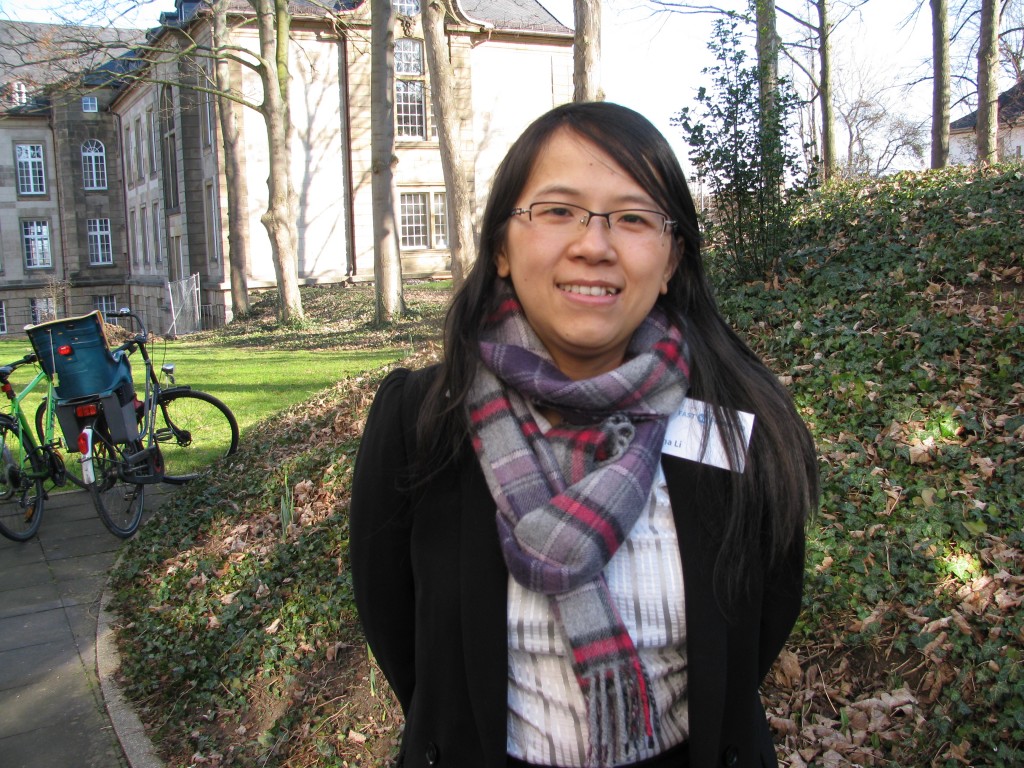
Lina Li from the Adelphi think-tank told me pollution concerns could speed up China’s climate action (Pic. I.Quaile)
The cost argument
Although many scientists are alarmed at the slow pace of emissions reductions, IPCC chief scientist Hoesung Lee told the Guardian in an interview it was still possible to keep to the two-degree target. The current UN climate chief Christina Figueres, who will hand over to Mexican Patricia Espinosa later this year, has said emissions would have to peak by 2020 if that limit is to be kept to. But Lee is keen to keep the options open, saying it would still be possible to keep to the limits if emissions peaked later. But he warned the costs could be “phenomenal”. He believes expensive and controversial geoengineering methods may be necessary to withdraw CO2 from the atmosphere and store it.
A report published this week by UNEP says the cost for assisting developing countries to adapt to climate change could reach up to 500 billion dollars annually by 2050. This is five times higher than previous estimates, the report says.
UNEP urged countries to channel more funds towards adaptation, saying the costs would rise “sharply”, even if countries succeed in limiting global temperature increase to two degrees Celsius.
I asked Mattias Söderberg, Co-Chair of the Climate change advisory group with the climate justice ACT alliance, how he felt about the progress of climate action and the role of the current Bonn meeting. He said the UNEP report, along with the alarming news about islands disappearing under rising seas in the Pacific, highlighted the urgent need for action. “Climate change is not a matter of tomorrow, but a crisis we need to deal with today.”
Time to ratify!
So far, 177 parties have signed the Agreement. But only 16 parties have ratified the treaty. It must be ratified by 55 parties representing 55 percent of total global emissions to enter into force. Söderberg called on wealthy, industrialized countries to move ahead with ratification:
“I am happy to see many of the poor and vulnerable countries moving fast with their ratification, and I hope other countries will follow soon. I am worried about the EU, which seems to be delayed”. Söderberg says the EU, could find itself on the sidelines, overtaken by others.
But the increasing concern over refugees and migration here in Europe could make a lot of countries look more closely at climate change, which is likely to increase the number of people having to leave their homes and look for a better life elsewhere.
“Go, world, go!”
NGO representatives stress that the Bonn talks can only help kick off the series of measures necessary to halt global climate change. Greenpeace climate policy chief Martin Kaiser told me the main work had to be done in the countries themselves, which have to work out their timetables to reach the goals agreed in Paris. That means an early transition to a fossil-free future. Kaiser called on host country Germany in particular, often cited as a model for its shift to renewable energy, to come up with a binding exit strategy for coal by 2030.
“Without an exit from coal, Germany’s signature under the Paris Agreement is worthless”, he told me.
The world’s top emitters, the USA and China, will also have to take major steps to halt climate warming. The delegates meeting in Bonn until May 26 have their work cut out for them. I have always been skeptical about the mass jubilation over the Paris Agreement. Yes, we needed it. But the proof of every pudding is in the eating. All the indications are that 2016 will be the hottest year on record, and probably by the largest margin ever. If the Paris document is to be more than a lot of pieces of paper, we will have to see things happening very soon – and definitely not just in the conference rooms of Bonn and elsewhere.
Arctic sea ice, Greenland and Europe’s weird weather
As I write this, I am sitting in a short-sleeved shirt with the window open, enjoying an unusually warm start to the month of May. It’s around 27 degrees Celsius in this part of Germany, pleasant, but somewhat unusual at this time. The first four months of this year have been the hottest of any year on record, according to satellite data.
The Arctic is not the first place people tend to think of when it comes to explaining weather that is warmer – as opposed to colder – than usual in other parts of the globe. But several recent studies have increased the evidence that what is happening in the far North is playing a key role in creating unusual weather patterns further south – and that includes heat, at times.
Why sea ice matters
The Arctic has been known for a long time to be warming at least twice as fast as the earth as a whole. As discussed here on the Ice Blog, the past winter was a record one for the Arctic, including its sea ice. The winter sea ice cover reached a record low. Some scientists say the prerequisites are in place for 2016 to see the lowest sea ice extent ever.
Several recent studies have increased the evidence that these variations in the Arctic sea ice cover are strongly linked to the accelerating loss of Greenland’s land ice, and to extreme weather in North America an Europe.
“Has Arctic Sea Ice Loss Contributed to Increased Surface Melting of the Greenland Ice Sheet”, by Liu, Francis et.al, published in the journal of the American Meteorological Society, comes to the conclusion: “Reduced summer sea ice favors stronger and more frequent occurrences of blocking-high pressure events over Greenland.” The thesis is that the lack of summer sea ice (and resulting warming of the ocean, as the white cover which insulates it and reflects heat back into space disappears and is replaced by a darker surface that absorbs more heat) increases occurrences of high pressure systems which get “ stuck and act like a brick wall, “blocking” the weather from changing”, as Joe Romm puts it in an article on “Climate Progress”.
Everything is connected
The study abstract says the researchers found “a positive feedback between the variability in the extent of summer Arctic sea ice and melt area of the summer Greenland ice sheet, which affects the Greenland ice sheet mass balance”. As Romm sums it up:“that’s why we have been seeing both more blocking events over Greenland and faster ice melt.”
He quotes co-author Jennifer Francis of Rutgers University, New Jersey, explaining how these “blocks” can lead to additional surface melt on the Greenland ice sheet, as well as “persistent weather patterns both upstream (North America) and downstream (Europe) of the block.
“Persistent weather can result in extreme events, such as prolonged heat waves, flooding, and droughts, all of which have repeatedly reared their heads more frequently in recent years”, Romm concludes.
“Greenland melt linked to weird weather in Europe and USA” is the headline of an article by Catherine Jex in Science Nordic. People are usually interested in changes in the Greenland ice sheet because of its importance for global sea level, which could rise by around seven metres if it were to melt completely. But Jex also draws attention to the significance of changes to the Greenland ice for the Earth’s climate system as a whole.
The jet stream
“Some scientists think that we are already witnessing the effects of a warmer Arctic by way of changes to the polar jet stream. While an ice-free Arctic Ocean could have big impacts to weather throughout the US and Europe by the end of this century”.
She also notes some scientists warning of “superstorms”, if melt water from Greenland were eventually to shut down ocean circulation in the North Atlantic.
The site contains an interactive map to indicate how changes in Greenland and the Arctic could be driving changes in global climate and environment.
The jet streams drive weather systems in a west-east direction in the northern hemisphere. They are influenced by the difference in temperature between cold Arctic air and warmer mid-latitudes. With the Arctic warming faster than the rest of the planet, this temperature contrast is shrinking, and scientists say the jet streams are weakening.
Jex quotes meteorologist Michael Tjernström, from Stockholm University, Sweden: “Climatology of the last five years shows that the jet has weakened,” says. Its effect on weather around the world is a hot topic.
“We’ve had strange weather for a couple of years. But it’s difficult to say exactly why.”
One explanation, Jex writes, is that a weak jet stream meanders in great loops, which can bring extremes in either cold dry polar air or warmer wetter air from the south, depending on which side of the loop you find yourself. If the jet stream gets “stuck” in this kind of configuration, these extreme conditions can persist for days or even weeks.
Experts have attributed extreme events like the record cold on the east coast of the USA in early 2015, a record warm winter later the same year, and the summer heat waves and mild wet winters with exceptional flooding in the UK to these kind of “kinks” in the jet stream.
Greenland and the ocean
The changes to Greenland’s vast land ice sheet also have consequences for ocean circulation, because they mean an influx of the cold fresh water flowing into the salty sea. And the sea off the east coast of Greenland plays a key role in the movement of water, transporting heat to different parts of the world’s oceans and influencing atmospheric circulation and weather systems.
There have often been “catastrophe scenarios” suggesting the Gulf Steam, which brings warm water and weather from the tropics to the USA and Europe could ultimately be halted, leading to a new ice age. (Remember the “Day after Tomorrow?)
Although this extreme scenario is currently considered unlikely, research does suggest that the major influx of fresh water from melting ice in Greenland and other parts of the Arctic could slow the circulation and result in cooler temperatures in north western Europe.
Jex goes into the theory of a “cold blob” of ocean just south of Greenland, where melt water from the ice sheet accumulates. Some scientists say this indicates that ocean circulation is already slowing down. The “blob” appeared in global temperature maps in 2014. While the rest of the world saw record breaking warm temperatures, this patch of ocean remained unusually cold.
According to a recent study led by James Hansen, from Columbia University, USA, the ‘cold blob’ could become a permanent feature of the North Atlantic by the middle of this century. Hansen and his colleagues claim that a persistent ‘cold blob’ and a full shut down of North Atlantic Ocean circulation could lead to so-called ‘superstorms’ throughout the Atlantic. And there is geological evidence that this has happened before, they say. But the paper was controversial and many climate scientists questioned the strength of the evidence.
However, some scientists already attribute western Europe’s warm and wet winter of 2015 to the “cold blob”, Jex notes, which may have altered the strength and direction of storms via the jet stream.
The good old British weather
The UK’s Independent goes into a new study by researchers at Sheffield University, which indicates soaring temperatures in Greenland are causing storms and floods in Britain. The Independent’s author Ian Johnston says the study “provides further evidence climate change is already happening”.
It never ceases to amaze me that evidence is still being sought for that, but, clearly, there are still those who are yet to be convinced our human behavior is changing the world’s climate. So every bit of scientific evidence helps – especially if it relates to that all-time favourite topic of the weather.
The study also looks at the static areas of high pressure blocking the jet stream. With amazing temperature rises of up to ten degrees Celsius during winter on the west coast of Greenland in just two decades, it is not hard to imagine how this can effect the jet stream, and so our weather in the northern hemisphere.” If forced to go south, the jet stream picks up warm and wet air – and Britain can expect heavy rain and flooding. If forced north, the UK is likely to be hit by cold air from the Arctic”, Johnston writes.
The article quotes Professor Edward Hanna from the University of Sheffield, lead author of a paper about the research published in the International Journal of Climatology, and says seven of the strongest 11 blocking effects in the last 165 years had taken place since 2007, resulting in unusually wet weather in the UK in the summers of 2007 and 2012.
Hanna told the Independent computer models used 10 to 15 years ago to predict the extent of sea ice in the Arctic had significantly underestimated how quickly the region would warm.
“It’s very interesting to look at the observed changes in the Arctic … the actual observations are showing far more dramatic changes than the computer models,” Professor Hanna said.
“You do get sudden starts and jumps. It’s the sudden changes that can take us by surprise and there certainly does seem to have been an increase in extreme weather in certain places.”
Drawing conclusions (or not?)
In the Washington Post, (reprinted on Alaska Dispatch News) Chelsea Harvey sums up the conclusions of the latest research in an article entitled “Dominoes fall: Vanishing Arctic ice shifts jet stream, which melts Greenland glaciers”:
“There are a more complex set of variables affecting the ice sheet than experts had imagined. A recent set of scientific papers have proposed a critical connection between sharp declines in Arctic sea ice and changes in the atmosphere, which they say are not only affecting ice melt in Greenland, but also weather patterns all over the North Atlantic”.
So what do we learn from all of this? Sometimes I ask myself how many times we have to hear a message before we really take it in and decide to do something about it.
Here in Bonn, not far from the office where I am sitting now, the first round of UN climate talks since the Paris Agreement at the end of last year will be kicking off this coming weekend. The aim is to stop the rise in global temperature from going about two, preferably 1.5 degrees C. We have already passed the one degree mark. In an interview with the Guardian this week, the head of the IPCC Hoesung Lee says it is still possible to keep below two degrees, although the costs could be “phenomenal”. But many scientists and other experts are increasingly dubious about whether emissions can really peak in time to achieve the goal. Current commitments by countries to emissions reductions still leave us on the track for three degrees at least.
The concentration of greenhouse gases in the atmosphere is, as the Guardian puts it, “teetering on the brink of no return”, which the landmark 400 ppm measured for the first time at the Australian station at Cape Grim and unlikely to go below the mark again at the Mauna Loa station in Hawaii.
On my desk, I have a book entitled “Arctic Tipping Points”, by Carlos M. Duarte and Paul Wassmann. It was published in 2011. Before that, Professor Duarte had explained the global significance of what is happening in the Arctic to me
at an Arctic Frontiers conference in Tromso, Norway. How much more evidence do we need? Science takes a long time to research, evaluate and publish solid evidence of change and its consequences, with complex review processes. If politicians delay much longer, the pace of climate change will be so fast that action to avert the worst cannot keep up. Meanwhile, that Arctic ice keeps dwindling – and I sense another major storm on the approach.
Will Paris conference help the Arctic?
Things are hotting up on the international climate talks front, with one event after another telling us how important it is for the world to reach a new climate treaty at the UN Paris meeting at the end of the year.
I have just written an article: Climate countdown: 200 days to key Paris meeting. While I come to the conclusion that there is no alternative to a new agreement, with time running out, my research has also confirmed my feeling that we are not going to see enough emissions cuts on the table to bring us in any way close to the two degree goal – let alone the 1.5 degree upper limit for global temperature rise which an increasing number of experts say is the safer figure.
After this week’s Petersberg Dialogue in Berlin, hosted by German Chancellor Angela Merkel and attended by French President Francois Hollande, two potential heavyweights in the international climate debate, the message seems to be that there will be a Paris agreement, but that the meeting will be just one more step in a long-term process towards a low-carbon world. There is much talk of achieving that in the second half of the century – and that, I fear, could be too late for the Arctic.
CO2 on the rise, Arctic ice in decline
The NSIDC says the Arctic sea ice extent for April 2015 averaged 14.0 million square kilometers (5.4 million square miles), the second lowest April ice extent in the satellite record. It is 810,000 square kilometers (313,000 square miles) below the 1981 to 2010 long-term average of 15.0 million square kilometers (6.0 million square miles) and 80,000 square kilometers (31,000 square miles) above the previous record low for the month observed in 2007.
With scientists predicting the Arctic Ocean could be sea-ice free in summer in just a few years’ time, the adoption of a long-term approach to tackling climate change is not good news for the icy north.
In March, the global monthly average CO2 concentration crossed the critical 400 parts per million (ppm) mark. That was the first month in modern records with a global concentration of more than 400 ppm. The rise has happened much faster than natural change in the past. It would have taken around 6,000 years for nature to achieve what humankind has done in the past few decades.
CO2 is one of the chief factors responsible for the rise in global temperature. Countries would have to reduce their emissions dramatically to have any chance of achieving the goal set by the international community of keeping global warming to under two degrees Celsius.
Climate creeping up political agenda
The UN Climate Secretariat UNFCCC, based here in Bonn, is working round the clock to prepare the key Paris meeting and ensure that governments put firm pledges on the table. Climate change has also become an issue on the agenda of other key international meetings, like that Petersberg Dialogue mentioned above, a “Climate Week” including a business and climate conference in Paris this week, but also other non-specialised meetings, like the key G7 meeting to be hosted by German at Schloss Elmau, Bavaria, early next month. On the one hand, this shows climate change is gaining in importance on the international political agenda. But it also demonstrates that the annual rounds of UN talks alone cannot bring about the changes needed to halt climate change within the necessary time frame.
Not enough for two-degree target
And while there is no shortage of high-profile meetings with politicians stressing the need for rapid climate action, the pledges so far on the table are not sufficient to cut emissions to the level necessary to keep to the two degree target. Countries have been asked to put their figures on the table by October. So far, 38 countries have submitted.
Jennifer Morgan, Global Director of the Climate Program at the World Resources Institute (WRI) confirmed to me during a recent visit to Germany that there is still a huge gap between what has been promised and what is necessary. She says available solutions are not yet being deployed at the scale or speed required to accomplish an orderly transition to a low-carbon and climate-resilient economy.
“What Paris can help do is close that gap, both by getting stronger targets and commitments from countries, but also by creating a mechanism in the agreement itself that will strengthen targets every five years and by aiming towards a long-term goal of phasing out emissions by mid-century. That type of ambition mechanism can send signals that can accelerate the pace of change -which is very much needed.”
Morgan is a leading member of the “Agreement for Climate Transformation Consortium” (ACT), a group of climate experts from around the world. ACT has produced its own draft legal text for a new world climate agreement, which would include such a mechanism to continually up the climate targets.
Not all gloom and doom?
While even the top emitters China and the USA are signaling they have understood the need for emissions cuts, it is still not clear whether industrialized and developing countries will be able to agree on a “division of labour” – or rather emissions allowances and climate adaptation and loss-and-damage funding – to make an effective agreement possible.
France’s foreign minister Laurent Fabius, who will chair the key Paris summit, told the Petersberg Dialogue in Berlin:
“We must commit ourselves very resolutely because there isn’t an alternative solution, for the simple reason that there isn’t an alternative planet.”
German environment minister Barbara Hendricks spoke of a moral obligation to fight climate change, but stressed the need to take a long-term approach to “terminate the age of fossil fuels”.
With just 200 days to go until the start of the two-week Paris meeting, the sobering assumption seems to be that the conference itself will not come up with pledges enough to keep to the two degree target, let alone the 1.5 percent which many experts say would be the better goal.
But there is also widespread acknowledgement that there is no alternative to a world climate agreement and that mechanisms have to be put in place which will steadily increase the momentum and bring about the transition to a low-carbon economy by the second half of this century. Meanwhile, in a steadily warming world, the ice which sustains the unique and fragile ecosystems of the Arctic, continues to melt.




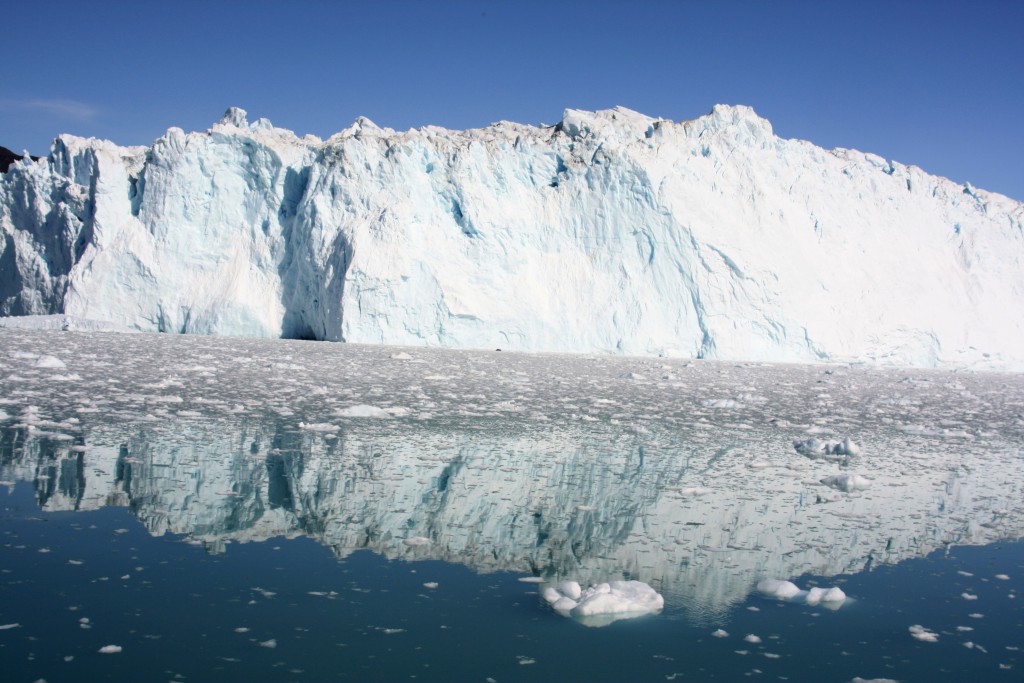
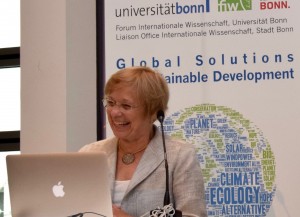

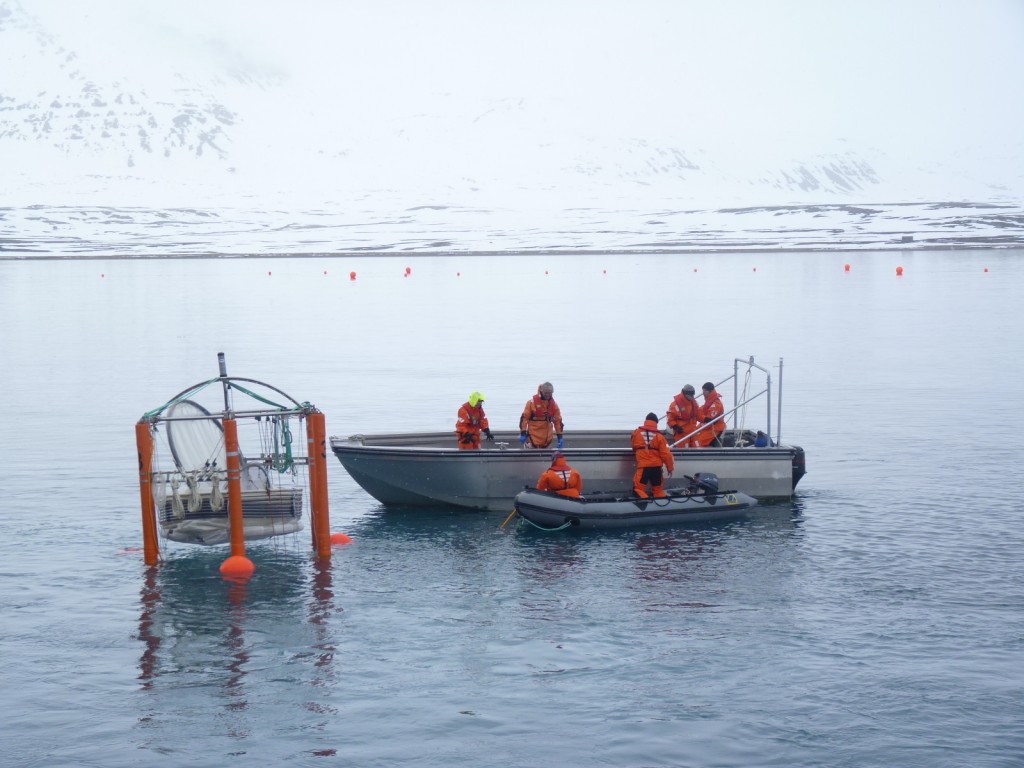
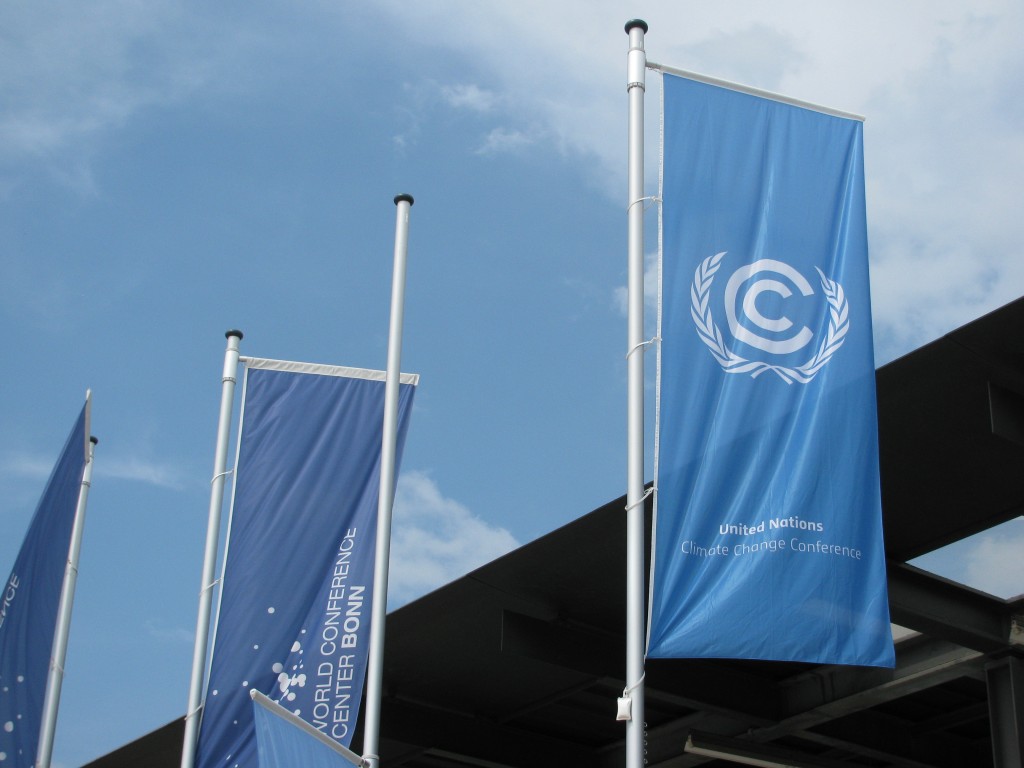
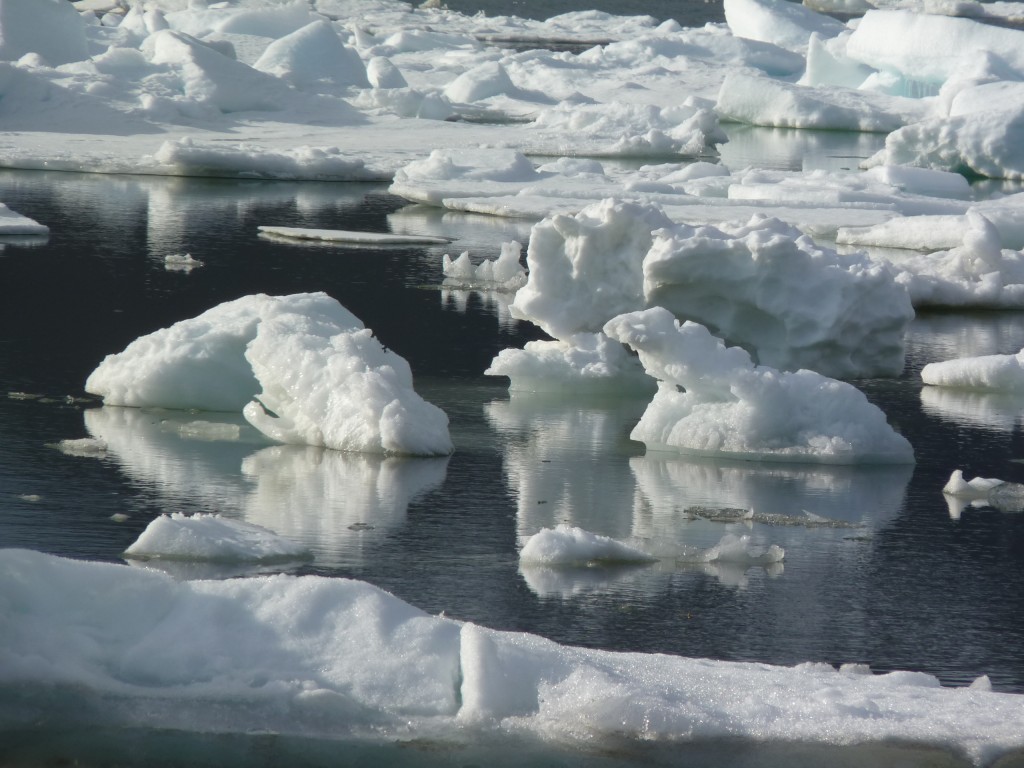


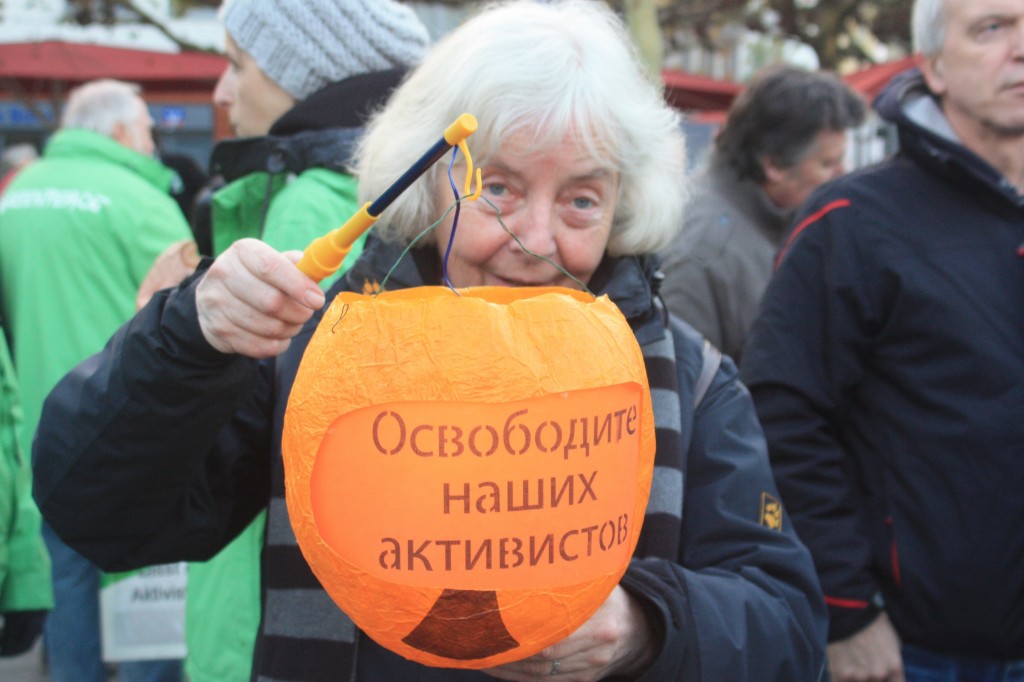
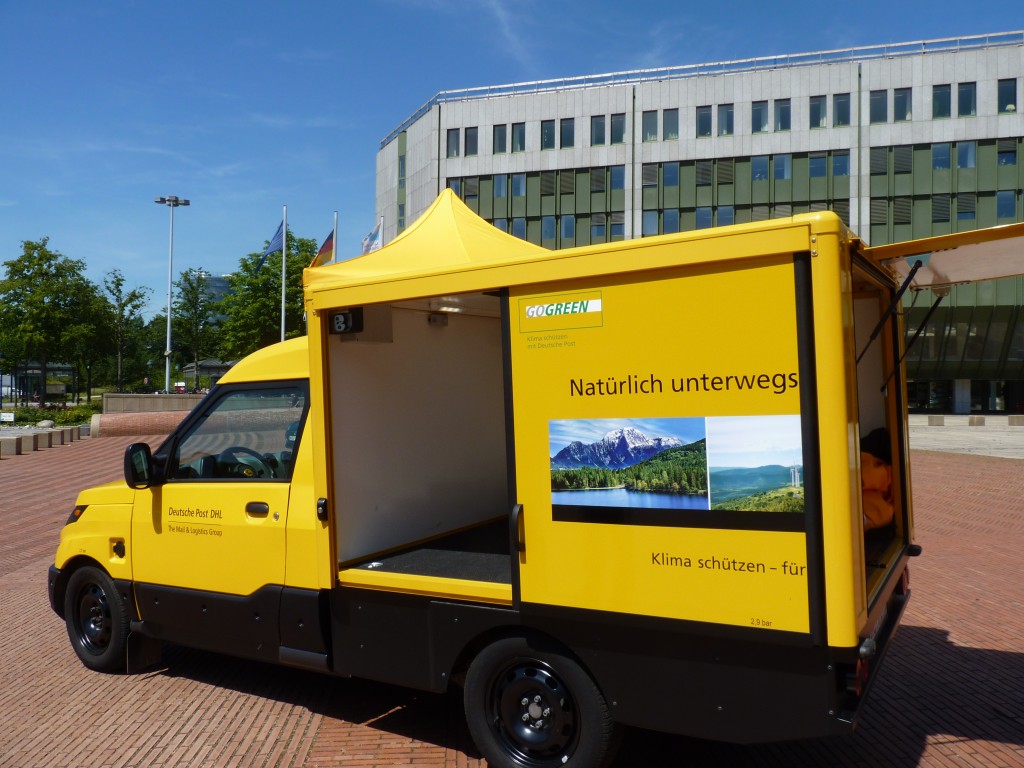



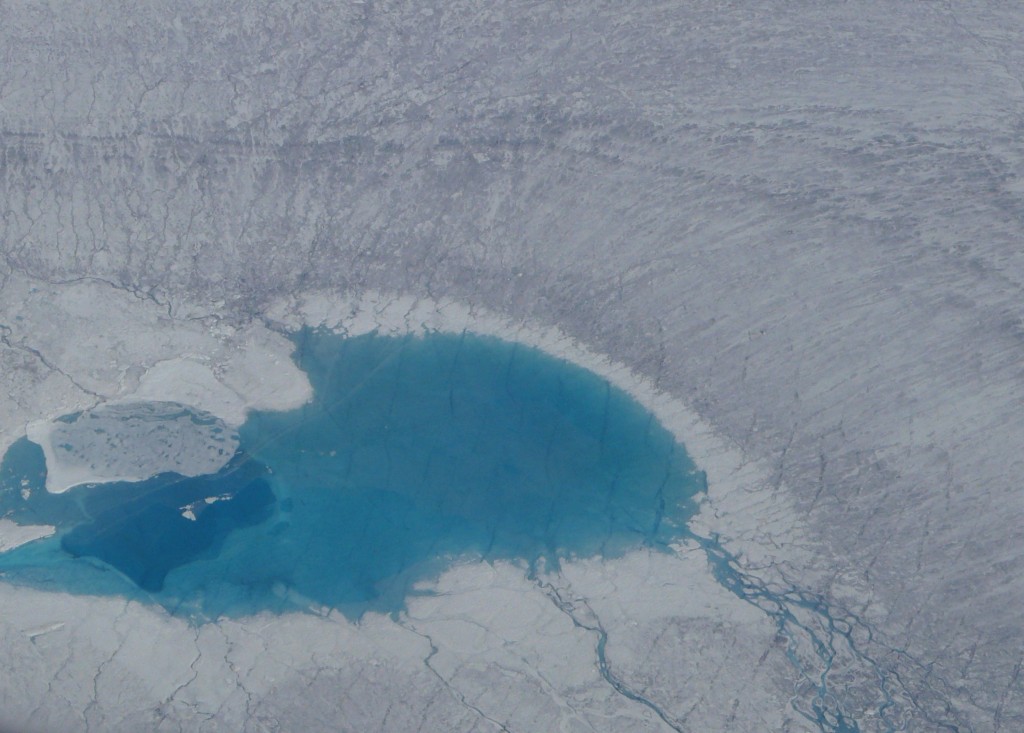

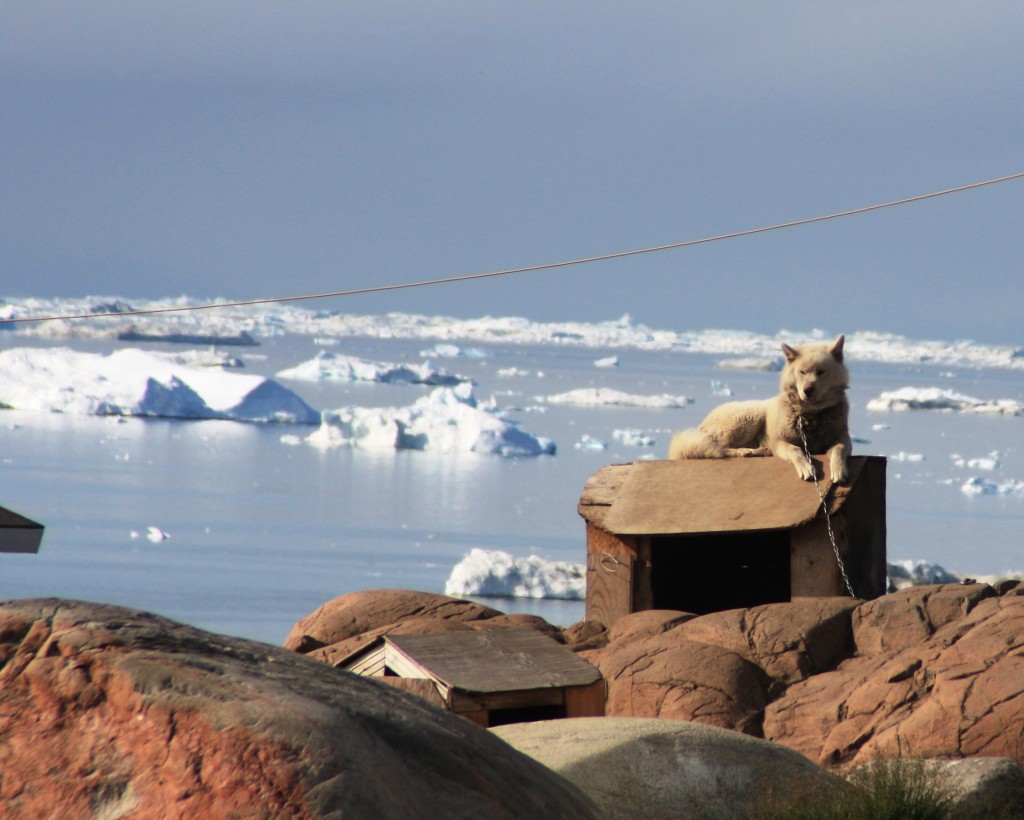
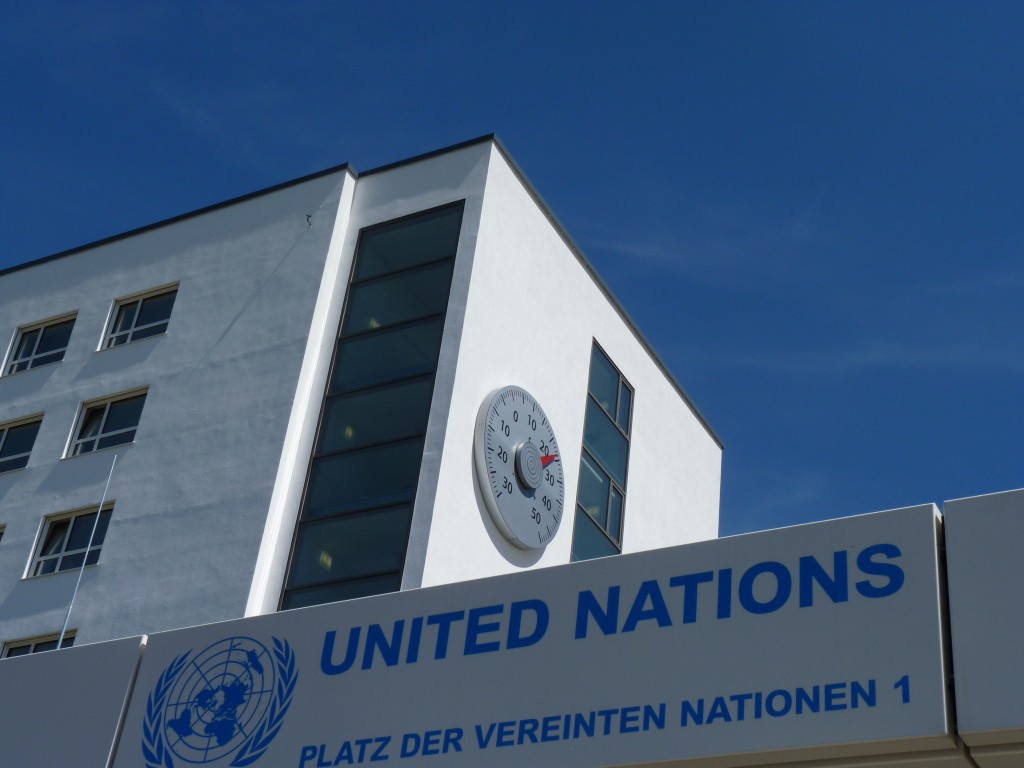
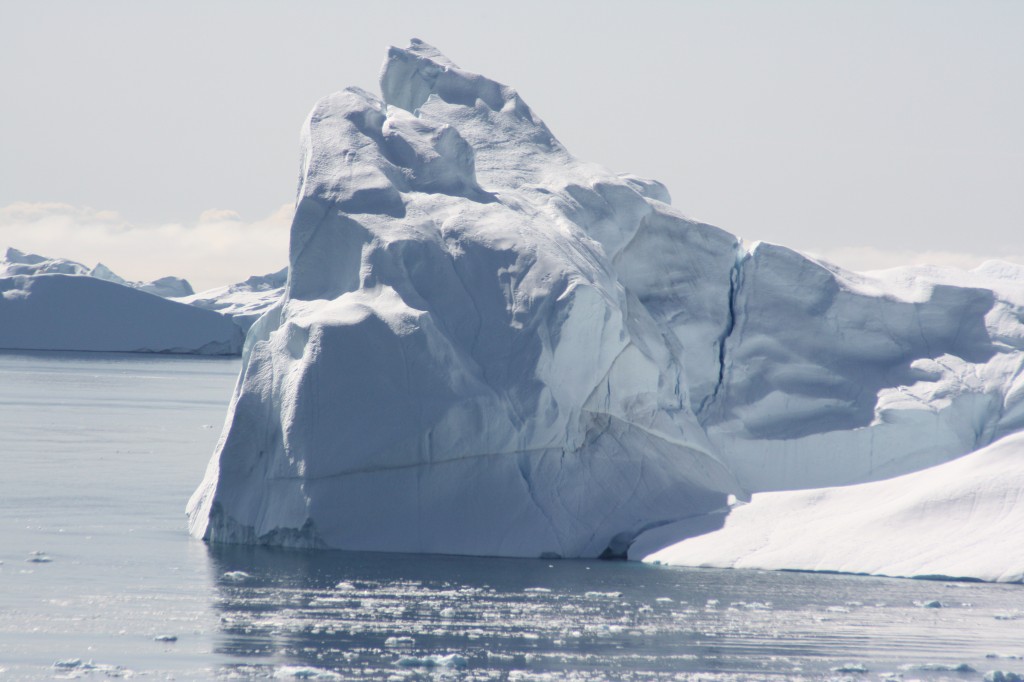
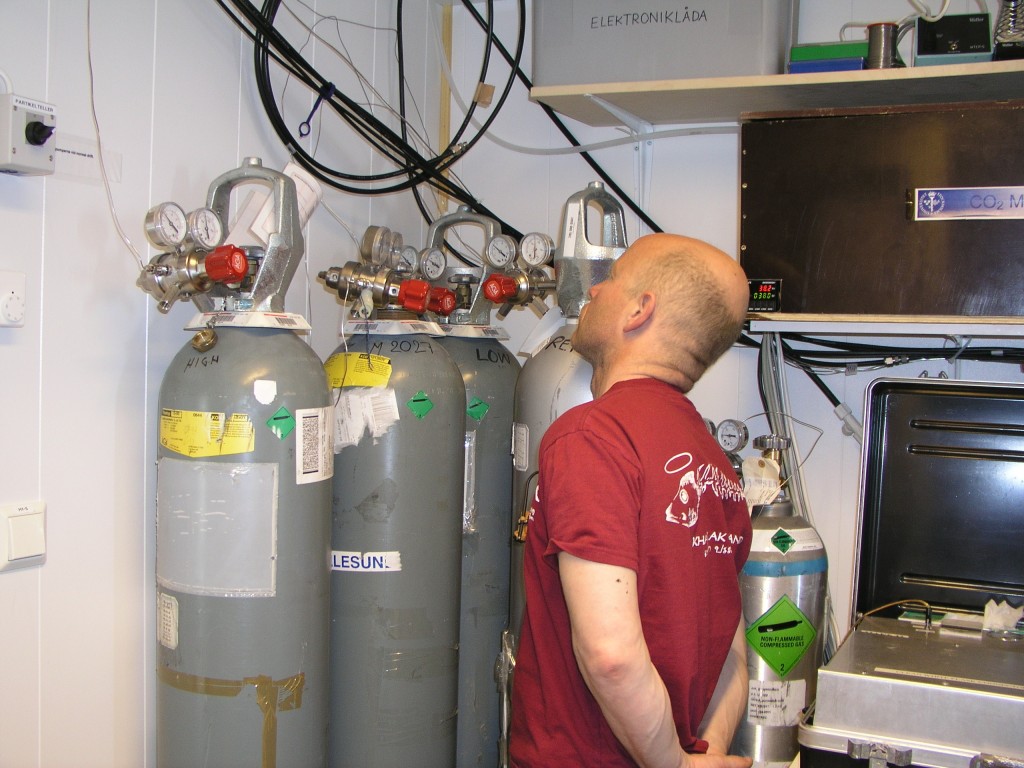
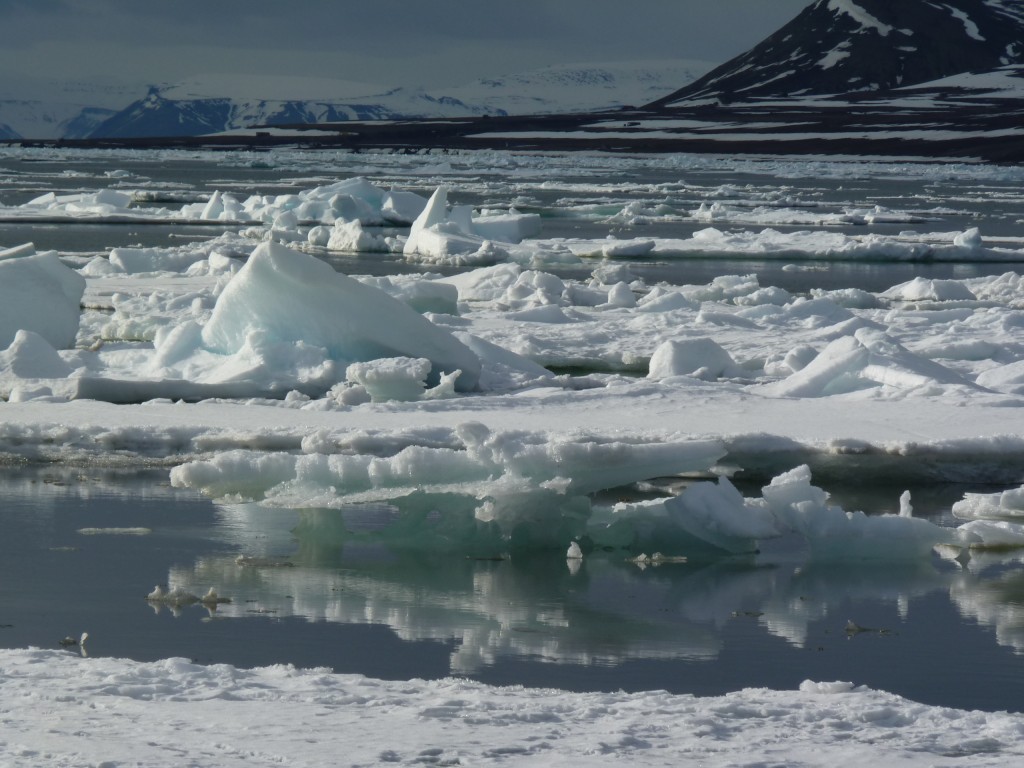
















Feedback